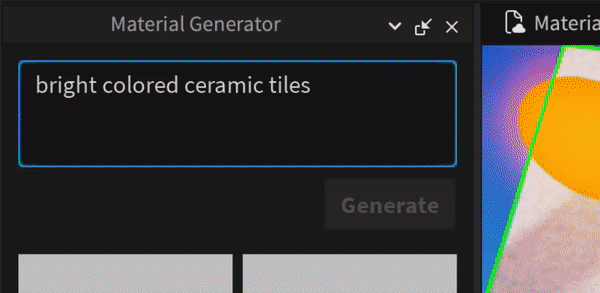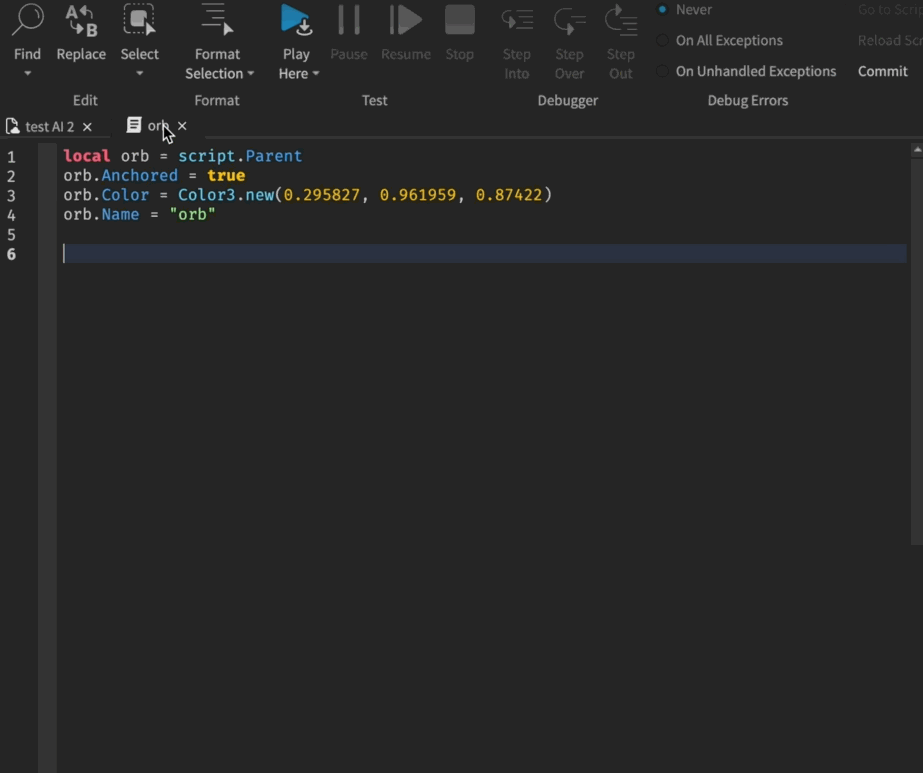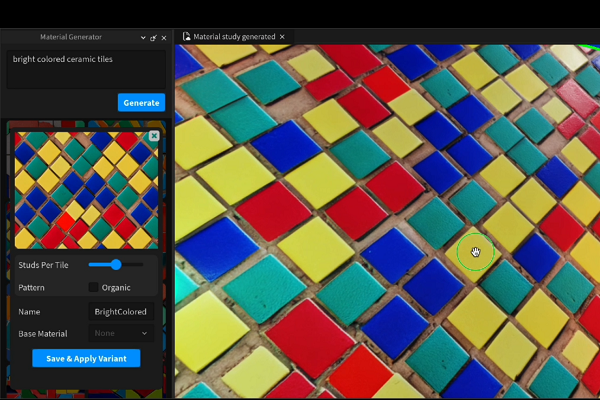Roblox Debuts Generative AI Game Creation Tools

Metaverse platform Roblox has introduced two new generative AI tools for game developers in beta called Code Assist and Material Generator. The new features follow Roblox’s generative AI strategy that the company recently outlined, aiming at accelerating and streamlining object design and deployment in its digital universe.
Roblox Generative

Code Assist will “help automate basic coding tasks so you can focus on creative work,” Roblox Studio head Stef Corazza said in a speech during this year’s Game Developer’s Conference. The idea is to make creating within the Roblox metaverse possible for those “who were blocked by technical hurdles but had a great idea.”
Roblox created Code Assist to help users turn their concepts into code they can embed within a metaverse space or object. Corazza demonstrated how natural language gets translated into code by using Code Assist to change the color of an orb to red and then destroy it 0.3 seconds after a player touches it and surround the first orb with a grid of other orbs. You can see the demonstration on the right. Referencing earlier code describing the first orb, Code Assist wrote code to add new orbs and adjust how it reacts to player interaction. The tool doesn’t work without other code to call on but can aid in filling in the details or at least more repetitive aspects of coding.
The Material Generator tool is also aimed at reducing tedium by producing art assets that can be layered on two-dimensional surfaces, simulating different maps of roughness, albedo, and “metalness,” as seen in the example at the top of the article. The game engine can reference those factors to make sure the object looks and behaves appropriately. Roblox next hopes to design fully three-dimensional models with similarly straightforward design systems. The long-term vision would be to produce 3D assets for a whole game based on a few concept drawings. In a couple of years, Corazza said you may be able to type “scene with a forest, a river, and a large rock” into an interface and produce an interactive 3D world fitting those parameters, which he said to developers will “feel like nuclear fusion.”
The GitHub Copilot AI coding assistant was one of Microsoft’s earliest projects employing OpenAI’s large language models, and the pair programmer has become very popular. On the visual front, Roblox creators have already started using text-to-image AI tools like DALL-E and Midjourney, and OpenAI recently opened a new dimension of creation through its POINT-E text-to-object generative AI tool. Roblox has plans to encourage creators to embed all kinds of generative AI tools in its metaverse in addition to its home-grown features.
Roblox’s generative AI mixes in-house and unnamed licensed models. The training is restricted to public-domain game content, but recent advances in generative AI models have made the development of these kinds of tools move more quickly, Corazza said. They are imperfect and shouldn’t be blindly incorporated into a game, but it’s not hard to redo them if there is an error, he added.
“It is still up to you to review, test, and determine if the code suggestion is contextually appropriate,” Corazza said. “No catastrophic events will happen if the generation isn’t good—just click the button and create another one.”
Follow @voicebotaiFollow @erichschwartz
Nvidia Upgrades and Expands Omniverse for Enterprise and Generative AI
Enterprise Generative AI Startup Typeface Raises $65M for Synthetic Media Creation









